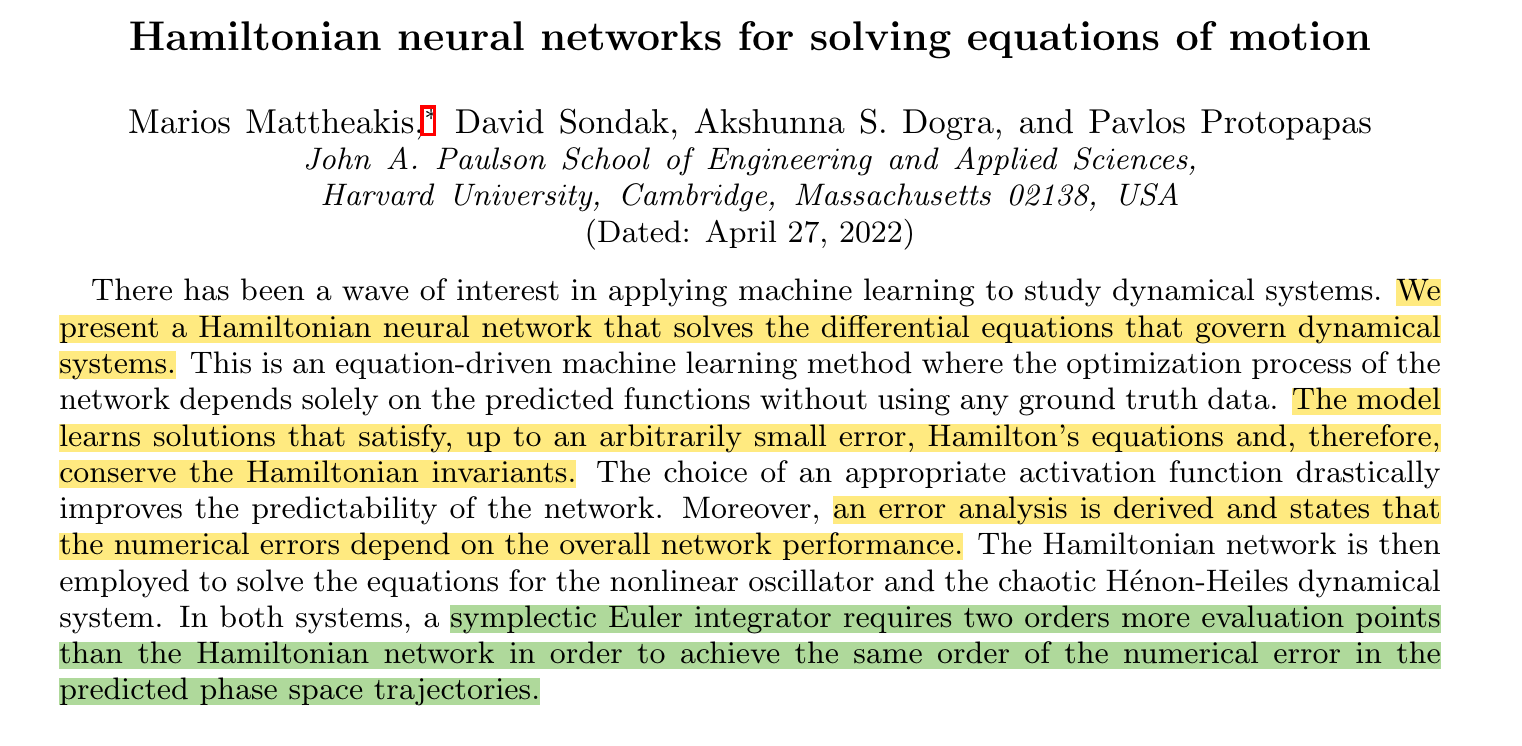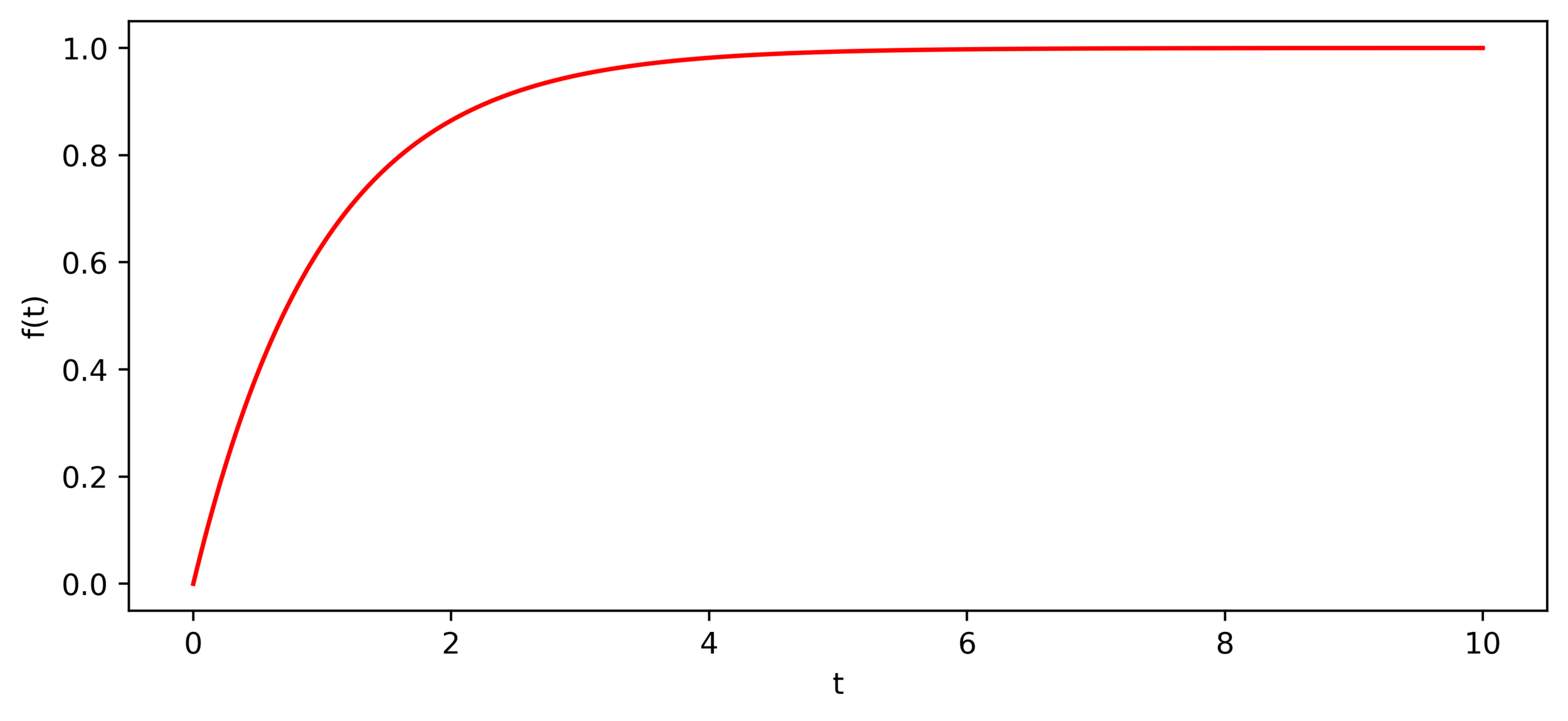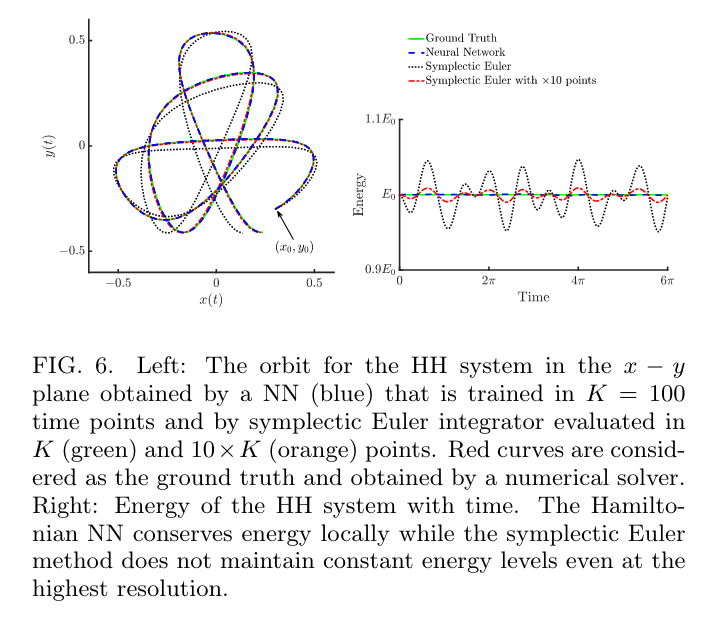
Motivation
Hamiltonian NNs
Symplectic methods
Conserve a modified energy over long time
Conserve the correct energy over long time
Being iterative methods they accumulate errors
Provide smooth representation of the solution, not based on previous positions.
High cost to solve large systems
It was shown this does not happen for NN differential equation solvers
Being iterative methods they accumulate errors
Hamiltonian neural networks
GOAL: Solve for \(t\in [0,T]\) the known system
STRATEGY: Model the solution with a network defined as
Training
Introduce a temporal discretization
\(t_0=0<t_1<...<t_M=T\)
Then minimize the following loss function:
with \(\hat{z}_n := \hat{z}(t_n)\) and \(\dot{\hat{z}}_n := \frac{d}{dt}\hat{z}(t)\vert_{t=t_n}\)

Training
with \(\hat{z}_n := \hat{z}(t_n)\) and \(\dot{\hat{z}}_n := \frac{d}{dt}\hat{z}(t)\vert_{t=t_n}\)

Choice of \(f(t)\)
They use the function \(f(t) = 1-e^{-t}\)

\(f\) rapidly tends to \(1\) and hence when \(\lambda=0\), for long enough time not just \(\hat{z}(t)\) will be symplectic but also \(\mathcal{N}_{\theta}(t)\) since
Error analysis
\(\delta z_n:= z(t_n)-\hat{z}(t_n)\in\mathbb{R}^{2n}\)
\( H(z_n) \approx H(\hat{z}_n) + \nabla H(\hat{z}_n) \delta z_n+ \frac{1}{2}\delta z_n^T \nabla^2H(\hat{z}_n)\delta z_n\)
\(\nabla H(\hat{z}_n) \approx \nabla H(z_n) - \nabla^2 H(\hat{z}_n)\delta z_n\)
This gives an ODE for the error, once we have \(\ell(t)\)
Error analysis
suppose \(\bar{\ell}\geq \ell_n\) for every \(n\)
Suppose \(\delta z_n\) is the maximum value and \(\delta z_n = (0,...,0,\delta z_n^i,0,...,0)\)
Then we have
$$|\delta z_n^i |\leq \frac{\bar{\ell}}{\sigma_{min}}$$
where \(\sigma_{min}\) is the minimum singular value of \(\nabla^2H(\hat{z}_n)\)
Hénon-Heiles system


Hénon-Heiles system
